The Oxford Bus Gates and Open Minds
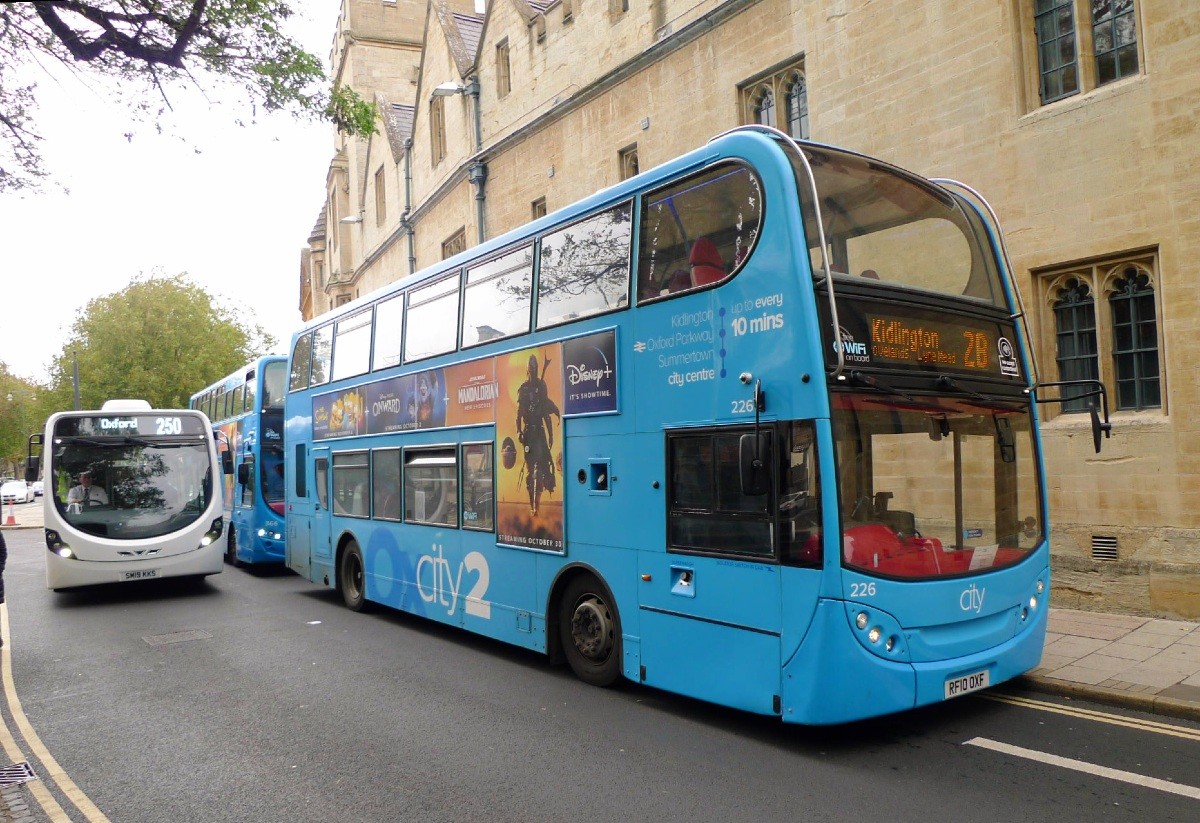
You may have become aware of a little controversy surrounding a few small changes concerning how car traffic is routed through the city of Oxford. On Saturday February 18th a rally was held to demonstrate against the proposed introduction of six new bus gates in the city. Five people were arrested, but it largely passed off peacefully. The Oxford Mail reported that this was all under the watchful eyes of police horses Wilma and Odin.1 You cannot fault the Oxford Mail for the level of detail it provides, or at times wonder if so little usually happens in Oxford that its earnest reporters are driven to report even the names of the horses.
People best known for having famous relatives (Lawrence Fox and Piers Corbyn) and a Neo-druid from Stonehenge (King Arthur Pendragon) wearing his robes all spoke against the proposed bus gates. The Neo-druid explained his concerns: ‘If they say you cannot go out of Oxford, how are you going to turn up to places like Stonehenge for the Solstice.’2 Lawrence, Piers and Arthur were joined by other groups including many Covid-19 lockdown sceptics, anti-vax folk, fascists, and “balaclava-clad ‘anti-fascists’.”https://www.oxfordmail.co.uk/news/23331850.anti-ltn-climate-lockdown-protest-brings-thousands-oxford/ They came from all across Britain. Some may even have flown in for the event. As many as 2000 people were there. It would not be unkind to describe some of them as conspiracy theorists. But others had genuine worries given what they had heard and read on-line. Some had concerns that the new bus gates would be turning the city into a prison. This affair has, after all, been reported as a semi-serious news story around the world.4
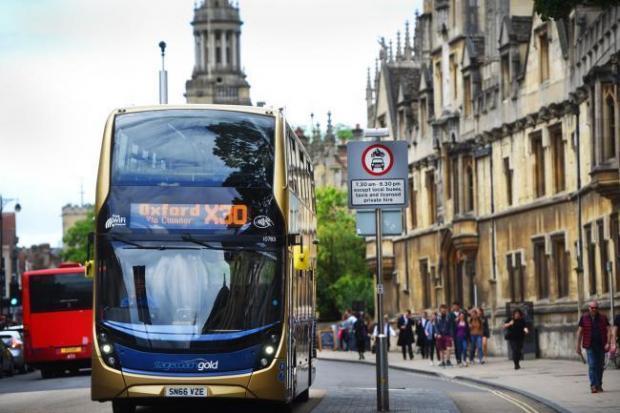
An existing Oxford Bus Gate
There are plenty of reasonable people with worries that their method of driving and the routes they might have to take will change in the near future. However, local opposition was joined by outsiders bringing their own unrelated agendas. Many people at that march were not conspiracy theorists, but also have suspicions as to the motives of the traffic planners. At a time when central government is doing so much that harms so many people, why believe that something being proposed by a part of local government might be benign or even beneficial?
Worries about transport changes need to be addressed with sympathy for those with genuine concerns about how their own lives will be affected. By looking back at the history of traffic calming in Oxford it can be easier to see that what is about to happen won’t be as bad as they think, and that the changes are needed. This is because changes in the past were clearly needed, they were also often opposed, and hardly anyone now complains about past changes.
Why did the large rally happen? When traffic was rerouted in Oxford in the past there was always a little controversy, but nothing ever on such a scale. When cars were prevented from using Cornmarket, and later when buses were too, there were grumblings. When a bus filter was introduced to stop cars, other than taxis and a few other vehicles driving on the High Street, there were some moans. In the 1980s and 1990s when bollards were introduced into some streets so that bikes could pass, but not cars, an irate letter or two was sent to the Oxford Mail, but 2000 people never gathered before in Oxford to complain about traffic restrictions.
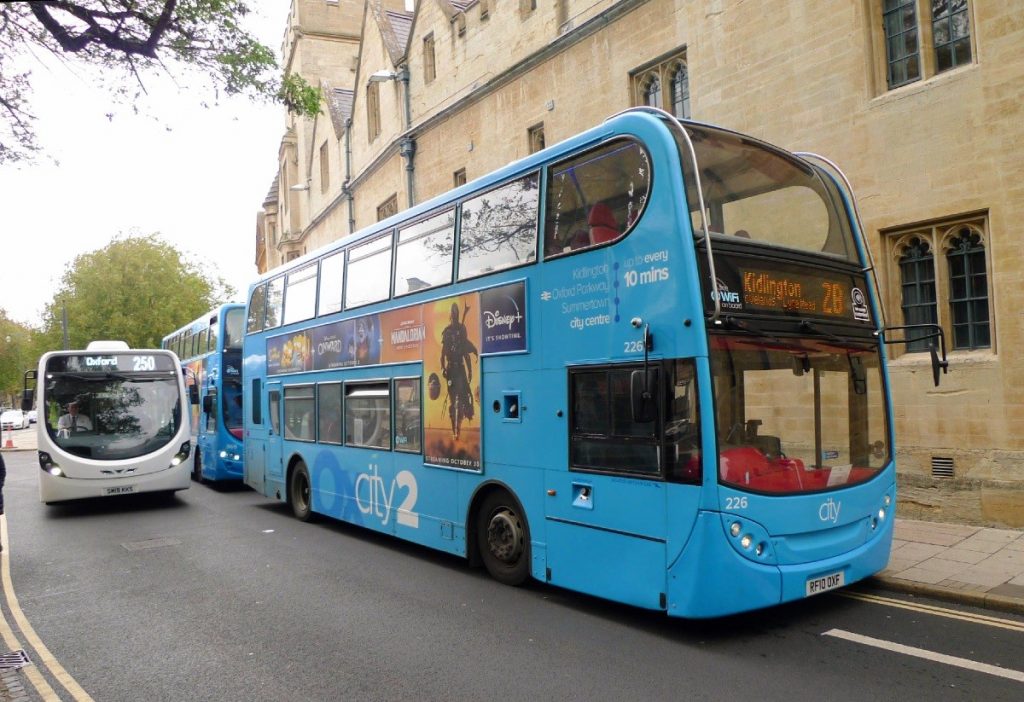
Another Oxford Bus
We now live in far more fractured times and this may be the reason why the protests have been so much more vitriolic this time. The city is more fractured by economic inequality than it was in the 1980s; but most of the opposition to the bus gates is from a few very well off business-people and other outsiders. If you wanted to entertain a conspiracy theory, it could be that by getting the conspiracy theorists of the world to focus on the bus gates, most opposition to them has now been made to look ridiculous. However, I can find no evidence of a safer-streets campaigner carefully seeding the idea to achieve this (possibly very useful) outcome. The bus gates are now practically an inevitability, as not to introduce them would be to bow down to the wisdom of Laurence Fox, Piers Corbyn, Arthur Pendragon, and their supporters.
If you want to know what has been proposed and consulted on, you can look it up easily. The introduction of the bus gates may be delayed, due to delays on the rebuilding of the Botley Road rail bridge, but they will now almost certainly soon arrive.5 Their official name is ‘experimental traffic filters’, but ‘bus gates’ is a far better description for reasons I’ll try to explain below. Two thirds of local residents support the plan.6 Short of a financial emergency occurring in 2023, preventing the county council from making any discretionary expenditure, which is not impossible, the bus gates are coming. And short of it turning out that they result in disaster – they are very likely to stay.
Rather than rehearsing yet again the arguments for and against bus gates, it might be more useful to look at how previous traffic re-routing schemes in Oxford have been introduced, why they happen, and how we so very quickly became used to them. No one now calls for Cornmarket to be opened up to cars again; or complains that shutting Broad Street to most traffic is a bad thing. In fact, it would have been very hard for 2000 people to have held a rally there against traffic calming measures, if traffic measures hadn’t been introduced to make that space so much more open.
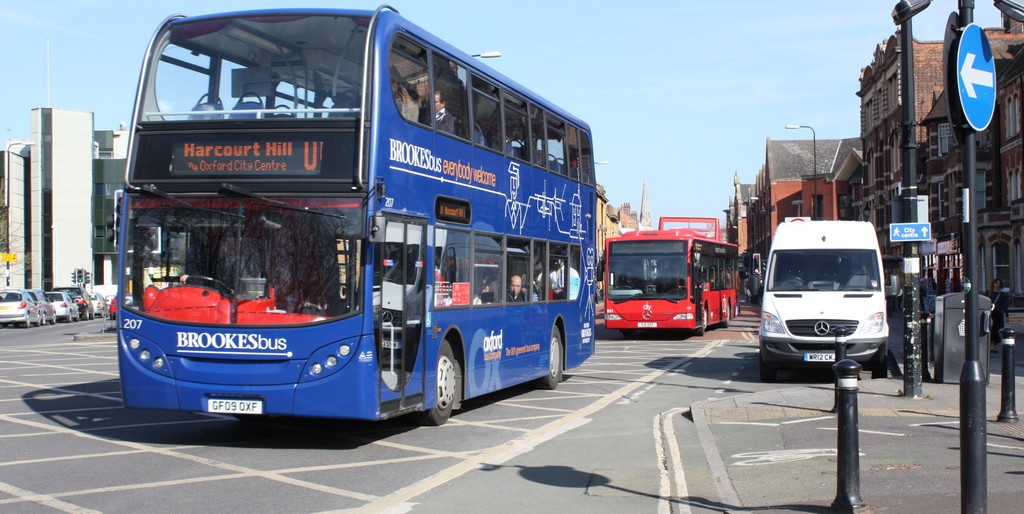
And a Third Oxford Bus (buses always come in threes)
The most recent controversy in Oxford concerned the introduction of a few low traffic neighbourhoods. It was obvious to anyone who cared to look, but especially to someone who was not used to it, that Oxford had a problem with its traffic. I arrived back in the city in 2013, having been away for 27 years. The traffic jams shocked me. I was especially shocked by the rat-running in the streets of East Oxford where children from my secondary school used to play as children (children whose parents often spoke Urdu as their first language). The city had changed in many places almost beyond recognition in terms of gentrification; but for some reason action had been slower to address Oxford’s growing traffic problems than had been the case in much of the rest of England.
I was asked to give a few public talks on my surprise at coming back to Oxford and finding it was so behind-the-times as compared to cities like Sheffield, where I had been living for the last ten years. Shortly after arriving back in the city a Conservative county councillor told me, only half-jokingly, that anything which slowed down her driving her large car from her far flung village in North Oxfordshire to lunch at the Ashmolean roof-top restaurant could not be permitted to happen. It slowly dawned on me that perhaps it had been the Conservatives’ almost continuous control of the County Council, that explained the state of the city’s streets. The county has responsibility for traffic, not the city.
I published a proposal (Figure 1), based upon worrying about people, and especially children, cycling around the city.7 The map is shown below. I suggested that the major arterial roads could be made one way to motorised traffic, not least because almost all of the serious car/van/lorry/bus and cycle collisions (and deaths) in Oxford occur at intersections on those roads. But I also suggested that five barriers to cars could be introduced on roads in inner East Oxford, to stop rat-running and also make the Cowley Road a far safer place to walk and cycle (buses would be allowed through).
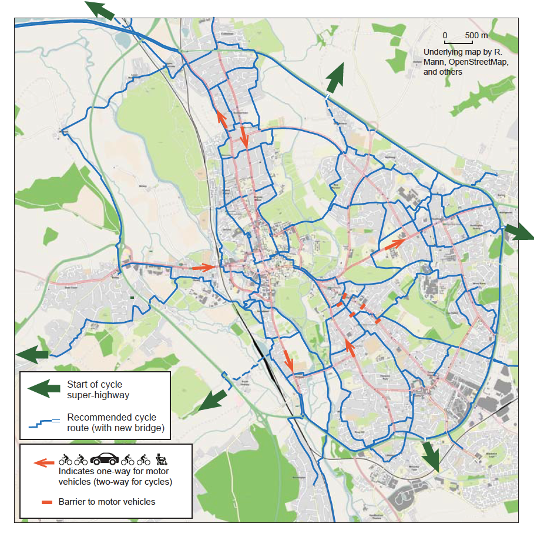
Figure 1: A Proposal made in 2016 to try to improve traffic flow and safety in Oxford
I am no traffic engineer. But it is now clear that the traffic engineers of the county had been planning for many years what to propose when their political leaders changed and an administration came in that was less interested in how quickly four-by-fours could drive into the city. Rather than just suggest five barriers, as I had in 2016, they later proposed 14, which were implemented in 2022. These are shown in the map below (Figure 2) taken from an anti-low traffic neighbourhood leaflet.8 They are now all in place, and were added to the three which had been in place on those streets already. I like to think that I may have helped a little by suggesting that this kind of thing was sensible, but rather like Spike Milligan in his series of books on the importance of the part he played in the war, I think the outcome would have been the same regardless.
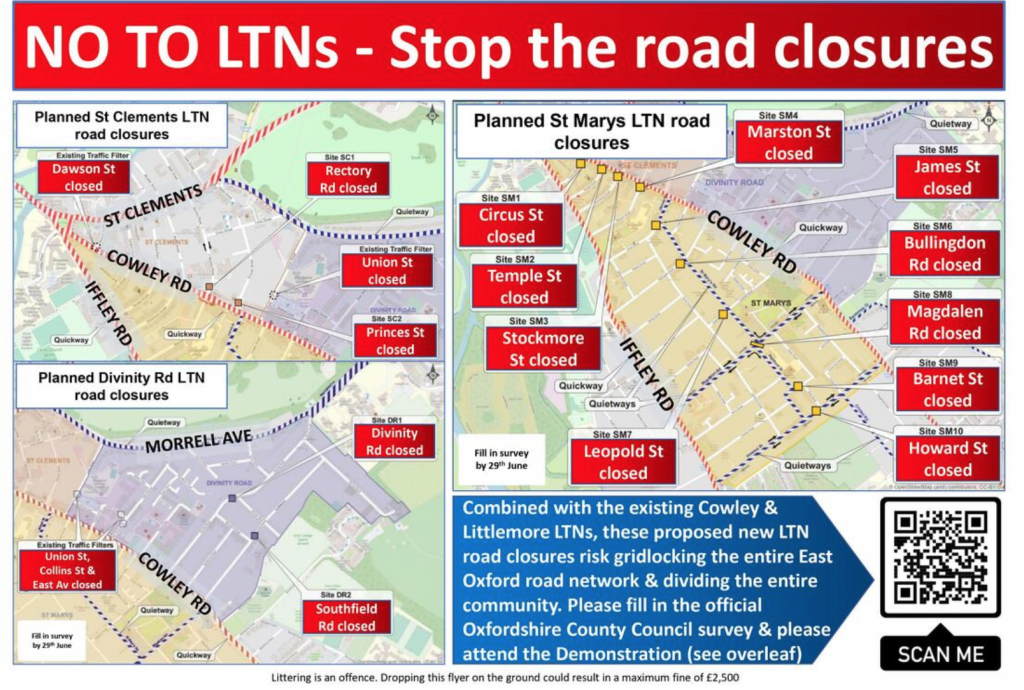
Figure 2: Image from a leaflet opposed to a restriction to some motorized through traffic
Now the “road closures” in East Oxford have been completed, opposition to them has quickly ebbed away. Of course, the roads were not closed, instead there was simply a restriction to some motorized through-traffic. Adding a restriction to through traffic actually opens the road to users other than car drivers. Children are able to cycle to school and play outside with less fear, everyone can cycle or walk more safely.
“Closure” implies that roads are intended just for drivers. It also implies that driving is no longer possible, when it is. It was just that through-driving has been stopped.
People have very quickly become used to the roads being largely car traffic free; and to how much quieter the Cowley and Iffley Roads now are without so much traffic trying to turn onto them from side streets. Buses can now travel more freely as they are less stuck in traffic jams on those two roads. Although the London Road is still very busy, which is part of the reason why new bus gates are planned for the near future.
Why do I think that it was inevitable that the low traffic neighbourhoods (LTNs) would come in (and be accepted) and that the new bus gates will now be introduced in 2023, 2024 or 2025 and similarly be accepted after initial opposition? And why don’t I think that any one individual making a suggestion that this would be a good thing matters that much? The answer to all these questions is that this is what always happens. But we can become better at understanding this if we look back at what has happened in the past.
The next map below (Figure 3) shows brilliant work recently published by CycleStreets.9 Their highly skilled researchers used OpenStreetMap (all one word!) data and ingenious analysis to calculate where all the rat-runs are across the UK. It was obvious that there was a problem before in Oxford. But why was the problem so concentrated in that part of east Oxford in particular? I can’t help thinking that it might have been because those streets in the past were home to some of the poorest children in the late 1970s and 1980s. Oxford really has gentrified, some parts more than others. But it was some of the parts that were poorest in the past that had been most neglected when it came to making streets safer.
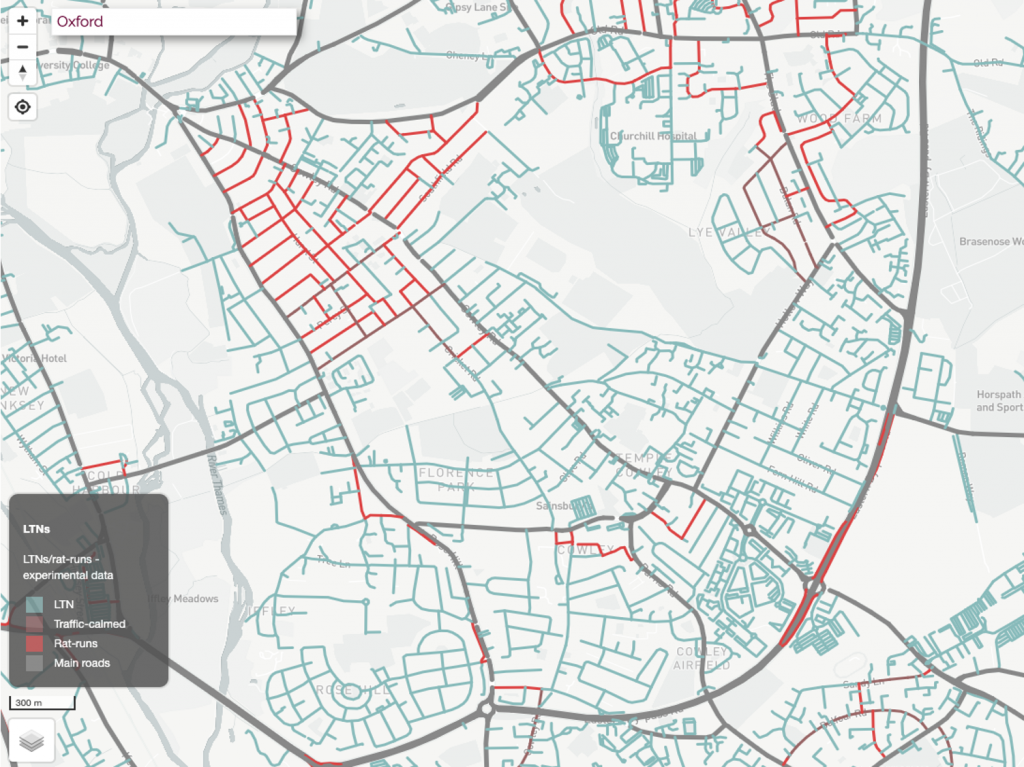
Figure 3: Rat runs in part of the city of Oxford prior to 2022
It is not poverty that causes a street to become a rat-run. It is lack of traffic planning and planning officers being less pressurised to make streets safer where children were poorer in the past. The next map below (Figure 4) shows the same area of Oxford, before the new LTN’s came in. However, now all the pre-existing LTNs are included. We did not call them LTN’s before, but just look at how many streets in this part if Oxford has been cut-off from motorised through-traffic prior to 2022. This was due to bollards, gates, or narrow gaps being introduced in the late 1970s, 1980s, or a little later. All that happened in 2022 was that a few more circles were added to the map below. All that will happen when the new bus gates come in, is that there will be six more such circles on the CycleStreets maps of Oxford, and pollution will fall, and buses, vans and taxis will travel more smoothly.
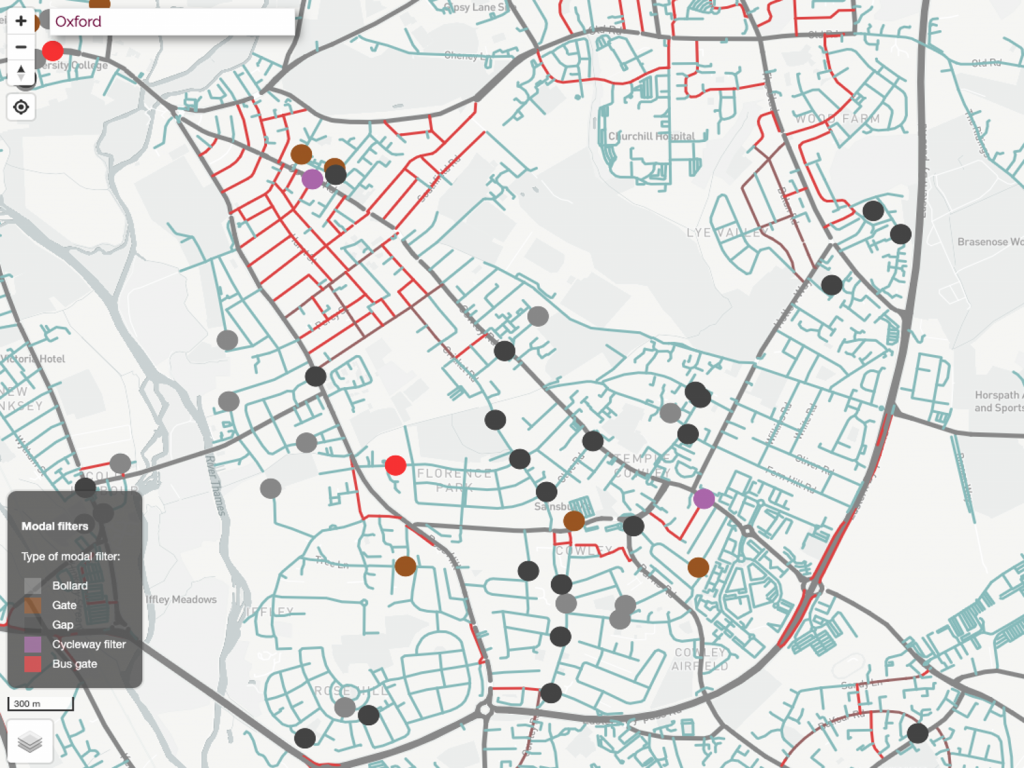
Figure 4: Roads closed to motorised through traffic in part of the city of Oxford prior to 2022
Today, almost all the streets of East Oxford are coloured blue-green on the most recent national map when zoomed into this city (Figure 5). Oxford district as a whole now has 68% of streets (by length) which are Low-Traffic Neighbourhoods, 12% are not, and the remaining 20% are the main roads.10 Following the changes made in 2022, the two areas of Oxford with the least low traffic neighbourhoods are now Summertown and Old Headington.11 Interestingly, these are two of the more affluent parts of the city today. The normal trend-over-time, where it is usually the most affluent areas that become 20mps zones first, or get zebra crossing first, may be ending.
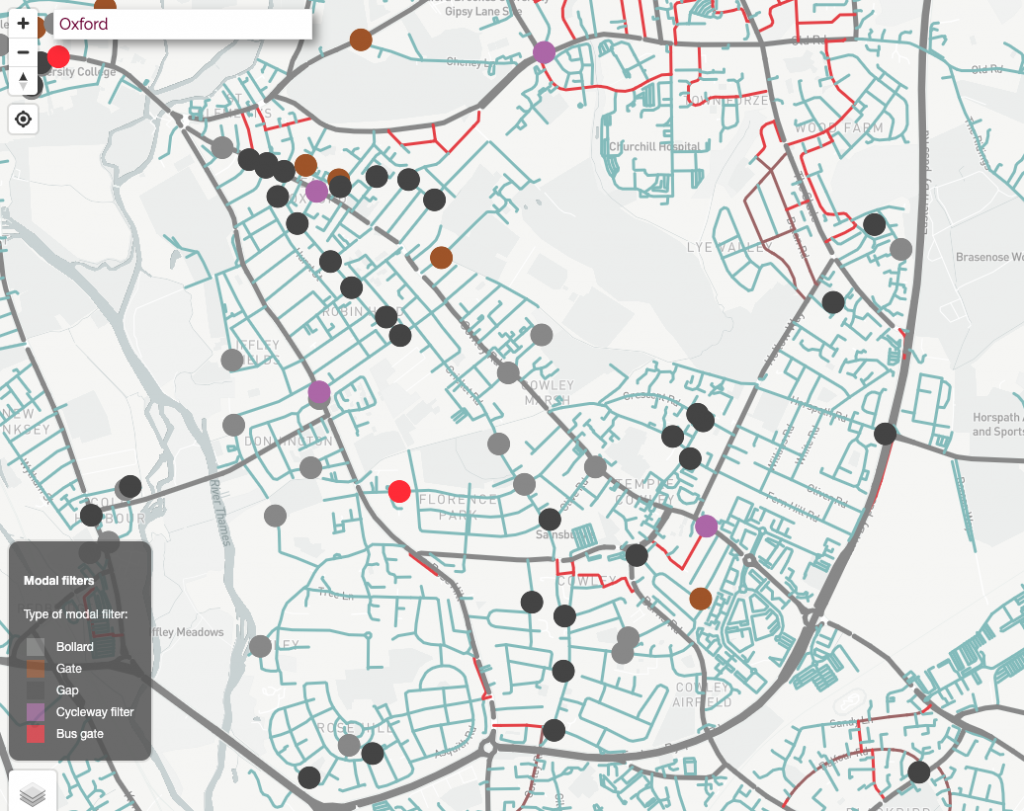
Figure 5: Roads closed to motorised through traffic in part of the city of Oxford by 2023
Of course, more could be done. At present, a great deal of motorised traffic and cycles moving from east to west in Oxford are funnelled into the Plain, before crossing Magdelan bridge. The University, and a couple of colleges in particular, could help reduce the danger of cycling on the Plain by making other routes across the Cherwell possible by bike. In some cases new bridges already exist, but they are private bridges, closed to the general public, and not well connected to cycle paths. The ‘servant’s entrance to the city’ is the only cycle route in that is off-road. This is the one the travels past where Parson’s pleasure once operated. One day the idea that we close that particular cycle and walking route on two days each year, just so that it does not become a right of way, will appears as ridiculous as the original purpose of Parson’s Pleasure.
The debate over traffic calming in Oxford has often been tortuous to watch. At times, local councillors have had to remind their colleagues of why all this matters so much. It is not just about making the city greener and traffic moving more efficiently. It is also about safety, especially safety for older people and children. On February 14th 2023 in one county council debate, when the county was setting its budget for the year, one councillor had to remind her colleagues about why Oxford needs to be a safer city:
Cllr @RosalindRogers
(LD, Headington): “I had to watch a friend of mine hit by a car at 30mph when I was 9. If she had been hit at 20mph she might have survived.”
(Source: Tweet)
The next stage will be the introduction of six new bus gates (see Figure 6). They are officially called traffic filters because a large number of other vehicles will be allowed through them, including the private cars of local residents up to 100 times a year for free. However, their main purpose is to ensure that buses can travel smoothly, especially during rush hours.
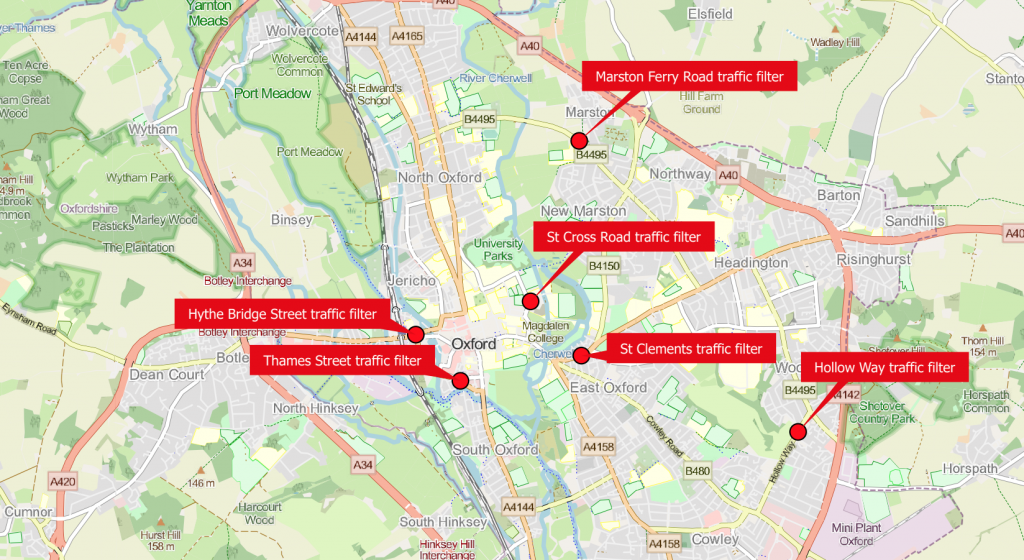
Figure 6: The next six bus gates or ‘traffic filters’ – planned for experimental introduction
No doubt there will be much debate as these are introduced. In that debate it is worth remembering that this development is mainly about buses. It is also about what has to change before a great many new buses can be added to the low or zero carbon fleet in Oxford (see Figure 7 for where only zero emission vehicles travel freely). As the Central Oxfordshire Travel Plan (COTP) makes clear: “Working with local bus operators, we will roll out a fleet of zero emission buses across the area. Funding awarded through the Zero Emission Bus Regional Areas (ZEBRA) scheme together with council and bus operator funding, will see the first phase of this ambition realised through the delivery of 159 electric local buses. Covering a large proportion of the COTP area, these buses will be used on routes in Oxford by 2024.”12

Figure 7: The existing (pilot) zero emission zone in the centre of Oxford
There are other changes coming too. Oxford already has its first zero emission zone in operation. If you drive into the streets shaded red in Figure 7, without paying the levy, you will be fined. The levy is £10 a day unless you are driving a low emission vehicle (when it is then £8), ultra-low (a levy of £4) or zero (£0). All these levies are set to double by 2025. A £60 fine is possible if the levy is not paid; but it can be halved if you pay the fine promptly.13 Figure 8 shows where the scheme is set to be expanded to, but as yet no date set for the public consultation on this proposal.

Figure 8: The proposed extension of the zero emission zone in the centre of Oxford
You can try to imagine how these proposals will change life in the city but it can be hard to do so. Maybe students in most colleges in future will no longer so often be dropped off and picked up at the start and end of each term by parents driving cars – unless that is they pay the various levies to do so. Instead, their responsible adult(s) will be able to say goodbye to them at the park and ride car parks on the outskirts of the city when they drop them off with their luggage to take the last leg of their journey on the bus. It’s better if University folk mix a little more with others and if students get to use a bus early on in their time in the city.
You may live outside of the city and if you already travel by public transport think that all these changes will not have a great effect on you, but Oxfordshire is also changing, not just Oxford. In February 2023 20mph limits were approved for much of Kidlington, Chilton, Church Hanborough, Kingston Lisle, Milton-under-Wychwood, North Hinksey, South Leigh, and Binsey Lane (on the edge of Oxford)14. The era of Toad of Toad Hall is coming to an end.
In 2018 two thirds of the poorest tenth of households in the UK did not have a car, half of the next poorest tenth had no car. These proportions will be higher in Oxford as car ownership is much less common in the city than it is in the UK as a whole. In contrast, almost 95% of the best-off fifth of households have a car, with three quarters of these households having two or even three or more cars each!15 The graph below (Figure 9), drawn by Charlie Hicks, makes the inequality more obvious.16 Often the debate about traffic routing is presented as if it is a battle between affluent upper-middle-class eco-greens on their cargo bikes, verses honest working class folk in their cars. But what is actually happening in Oxford is a change to make it possible to run a bus service well. Of course, how Oxford attracts and houses enough bus drivers and mechanics, people to clean the buses and the streets and all the other hundreds of jobs required to make a city work well is another question. In October 2022 the cutting of bus services in Oxford due to problems of recruiting drivers was reported by the BBC. The excuse given for delaying recruitment was not terribly plausible: ‘The Oxford Bus Company said there was a nationwide shortage of bus drivers and added a planned recruitment event in September had to be cancelled when the Queen died.’17 However, if in future the job of being a bus driver in Oxford is made better, by not having to spend so much of your day sitting in traffic dealing with upset and delayed customers, perhaps retaining drivers will become easier?
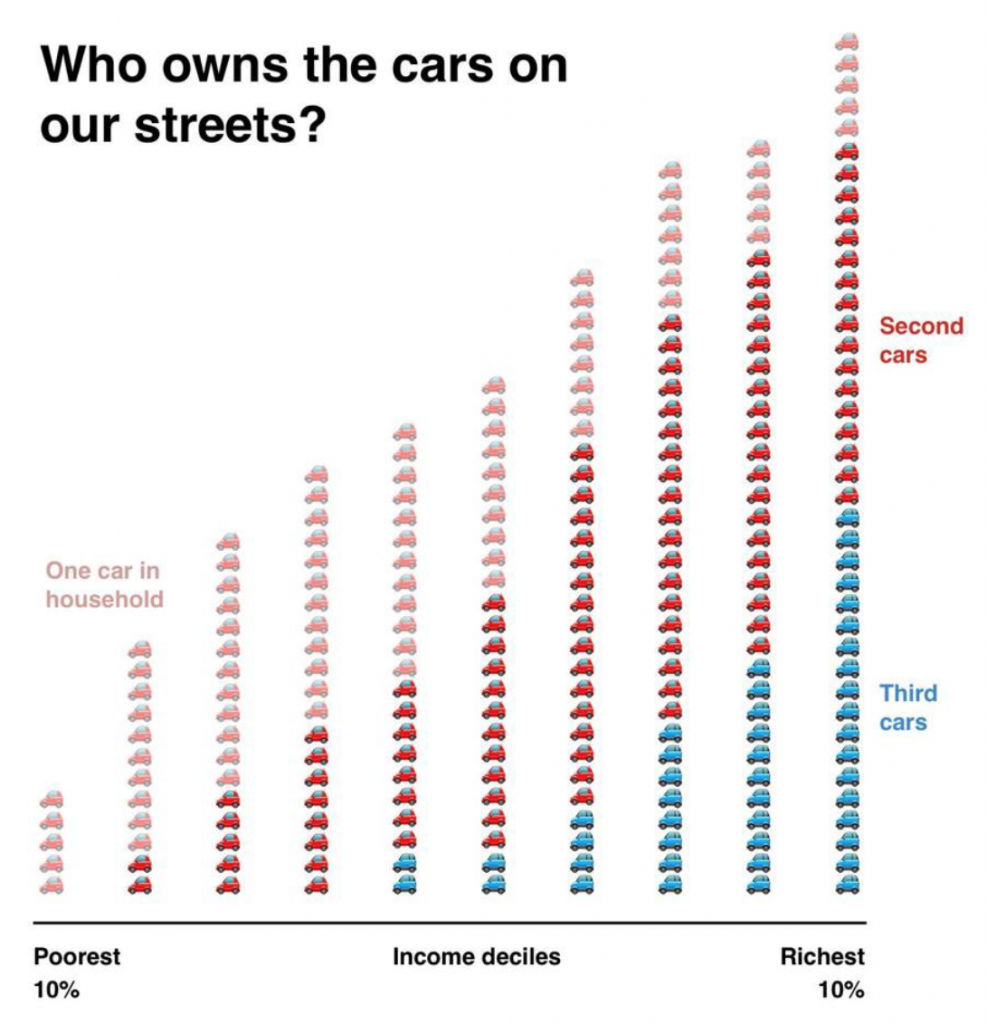
Figure 9: The distribution of who owns cars in the UK by household income
It is often said that those most in favour of new traffic calming measures in Oxford are many of the well-off residents of the city. However, while some of this group might benefit from having less traffic outside of their own homes, or feeling that they were safer when they or their children cycled, this group are not those who suffer the most from the current situation. The group most badly affected by the current situation are people who rely on buses to commute into, out of, and across the city. That is the group who have the most to gain. In theory, in future, they could have a smoother and faster commute than car drivers. Were that to happen then the premium that people pay for the convenience of living in the city might fall, and the house prices of those who have seen their streets become quieter might not rise as much as they might anticipate.
The suggestion that one day Oxford could have a reliable, cheap, and very frequent bus service is usually greeted with great scepticism; but it is not even a possibility without bus gates. It has been over three years since it was first announced that the city aimed to become: ‘Britain’s first all-electric bus town’18 At the very end of January 2023 the £82.5 million deal was finally signed.19 The first of 159 new battery powered electric buses arrives in Oxfordshire in September 2023. Central government are paying £32.8 million of the cost of the buses and the infrastructure to charge them. The County Council have committed £6.0 million, and the bus companies £43.7 million. When I tell people this, the most common reply I receive is: “I’ll believe it when I see it”. The central government funding was contingent on the new bus gates being introduced.
Few people argue that they would rather have diesel buses idling in traffic jams. For some, it is the reduction in air pollution that matters most, for others it is the climate change impacts. For me, I will be thinking of that Somerville graduate who spent a couple of her teenage years up looking at who then sat on the buses in Oxford and was reported (by The Economist) many years later in 1986 to have said: ‘If a man finds himself a passenger on a bus having attained the age of 26, he can count himself a failure in life.’20 Perhaps one of the new buses should be named after her? Far more appropriate than naming a wing of a college or department after such a person.
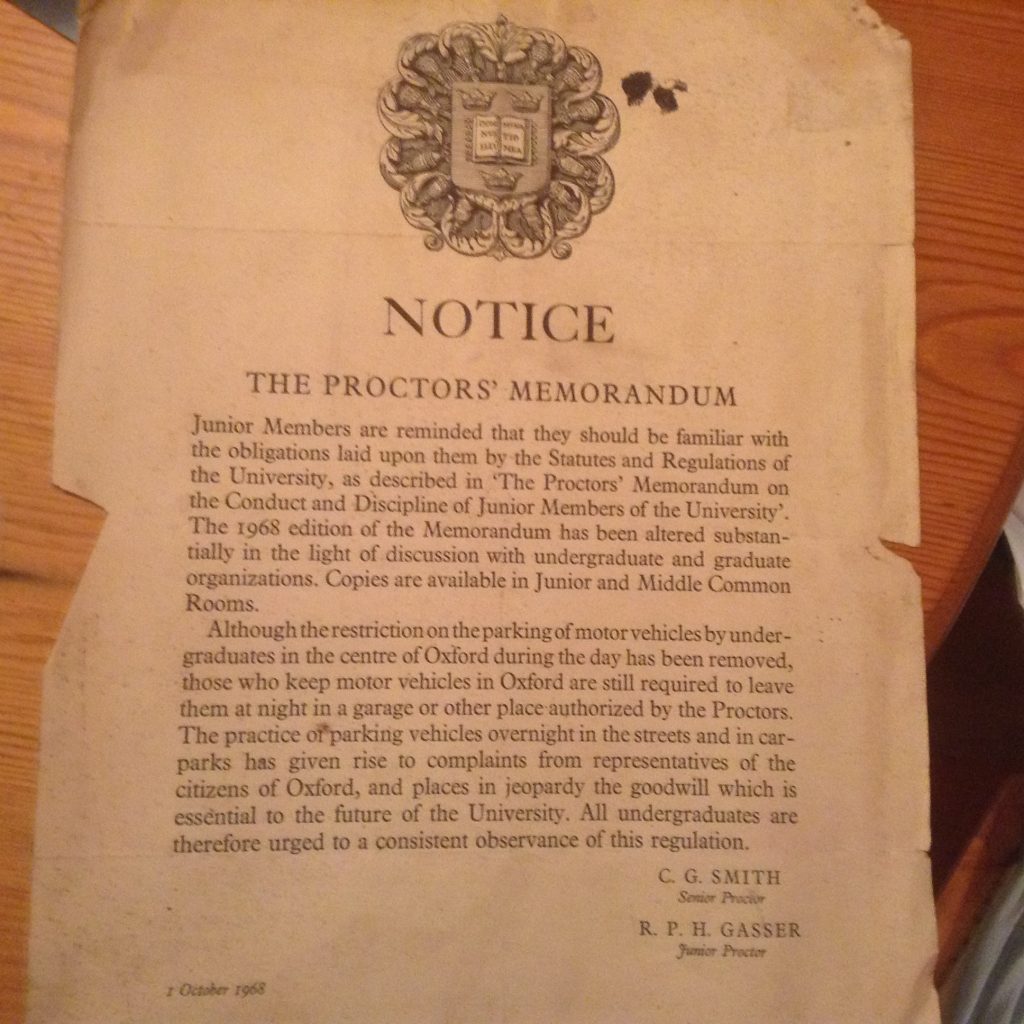
Figure 10: Proctor’s Memorandum on cars and the behaviour of undergraduates, 1/10/1968
We each have our own perspective. Depending on how, where and when we travel, some of us have already noticed a reduction in traffic jams and often attribute this to the covid pandemic and the increase in home working. But an analysis by the Sunday Times found that so many people were using their cars after the pandemic, rather than public transport, that average speeds had reduced by 2.5mph.21 In Oxford it varies more by road and time of day than in many places. Oxford also has a remarkably large number of private schools and you can tell when their terms times are by how full the roads are in the morning and afternoon. Those who currently drive their children a long way from their home to a private school may not welcome the bus gates.
There is much more happening. A parking levy for businesses is due to come into force in Oxford in 2023 which should also reduce traffic (see Figure 10 for a much older one).22 There are issues about E-Scooters and cyclists, not least the huge number who arrive in Oxford from abroad each autumn and have to newly learn which side of the road, or cycle track to be on! There is the complexity of trying to explain that when the bus gates (‘travel filters’) are introduced they will not just allow buses to pass in the hours that they are at first operating, but also coaches, taxis, private hire vehicles, mopeds, motorbikes, vans, lorries, anyone with a blue badge in their car, anyone driving ing (by car) who cares for anyone else when they are driving to or from them, any cars used as goods vehicles, and any local residents who obtain a permit (with a maximum of three permits per household and 100 days free use a year). The scheme will not begin until 2024.23
Finally, I am left wondering one last thing. Why did the police name their horses after the Germanic Wilma (meaning ‘resolute protector’) and Nordic Odin (which translates as ‘raging and frenzied’)? There was once a time when there were far more horses on Oxford’s streets. People then said that it would always be so. Maybe we’ll see a few more horses in future? There was a time when the city of Oxford had trams. The country is currently too poor for that to be a possibility again, but maybe one day? The last figure include in this short article (Figure 10) is a note posted by the Proctors in October 1968. Times do change, albeit slowly.
For a PDF the original article this piece was published in click here
References – clickable links given in the text above – given here in full for posterity (as links always eventually break)
1. https://www.oxfordshirelive.co.uk/news/oxfordshire-news/oxford-ltn-15-minute-city-8165191
2. https://www.oxfordmail.co.uk/news/23331892.lewis-star-laurence-fox-stonehenge-druid-piers-corbyn-march/
3. https://www.oxfordmail.co.uk/news/23331850.anti-ltn-climate-lockdown-protest-brings-thousands-oxford/
4. https://www.news.com.au/technology/online/social/12yo-goes-viral-after-pushing-false-15minute-city-conspiracy-theory-during-protest/news-story/c739a36a877c9049d0805db78fff9329
5. https://www.oxfordmail.co.uk/news/23107622.botley-road-closure-must-not-clash-bus-gates-councillors-warned/
6. https://www.oxfordmail.co.uk/news/23068426.residents-back-oxford-traffic-filters-two-one/
7. Dorling, D. (2016) The Wind and the Willows, Oxford Civic Society Visions Newsletter, July, pp.5-6, https://www.oxcivicsoc.org.uk/wp-content/uploads/2016/10/201607_visions.pdf
8. https://reconnectingoxford.weebly.com/east-oxford-ltn.html
9. https://www.cyclestreets.net/localauthorities/CycleStreetsLocalAuthoritiesBrochure.pdf
10. https://www.lowtrafficneighbourhoods.org/map/ltnstatistics/#11.92/51.73739/-1.2012
11. https://www.lowtrafficneighbourhoods.org/map/ltnstatistics:type=wards/#11.92/51.73739/-1.2012
12. Page 33 of the Central Oxfordshire travel plan: https://letstalk.oxfordshire.gov.uk/central-oxfordshire-travel-plan
13. https://www.oxfordshire.gov.uk/residents/roads-and-transport/oxford-zero-emission-zone-zez/about-zero-emission-zone
14. https://twitter.com/OxfordClarion/status/1628738874569633792
15. https://www.ons.gov.uk/peoplepopulationandcommunity/personalandhouseholdfinances/expenditure/datasets/percentageofhouseholdswithcarsbyincomegrouptenureandhouseholdcompositionuktablea47
16. https://twitter.com/Charlie_Hicks_/status/1570355513522810882
17. https://www.bbc.co.uk/news/uk-england-oxfordshire-63255759
18. https://www.oxford.gov.uk/news/article/1314/oxford_applies_for_funding_to_become_britain_s_first_all-electric_bus_town
19. https://www.oxfordbus.co.uk/deal-signed-bring-159-electric-buses-oxfordshire
20. https://www.theguardian.com/theguardian/1999/nov/10/transport quite when and exactly what words she used in this quip are hard to pin down, and she was certainly not to first to have made this ‘joke’. The Economist’s dating is given here: https://fullfact.org/news/margaret-thatcher-bus/
21. https://www.thetimes.co.uk/article/weekend-traffic-slower-than-the-rush-hour-crawl-after-covid-t2ljgnp3n
22. https://www.bbc.co.uk/news/uk-england-oxfordshire-59939201
23. https://www.headingtonliveablestreets.org.uk/oxfordshire-county-council-cabinet-approves-the-central-oxfordshire-travel-plan-and-traffic-filter-scheme/
For a PDF the original article this piece was published in click here